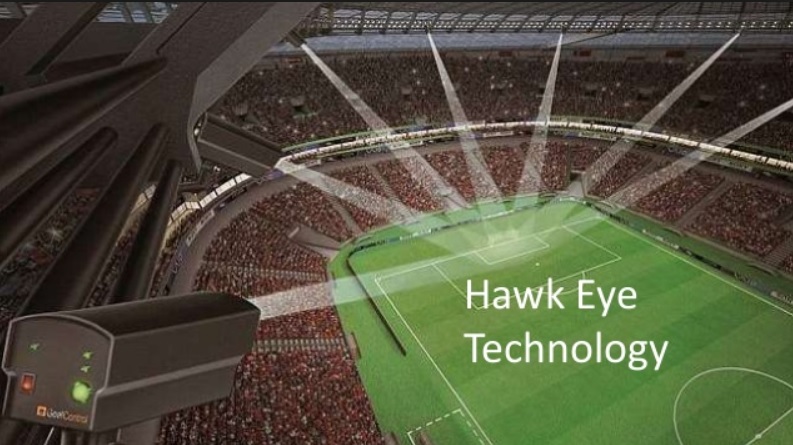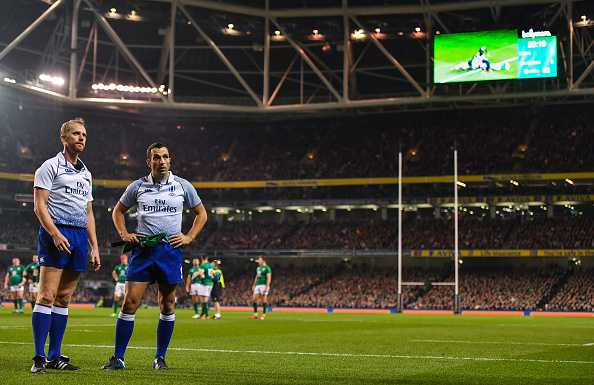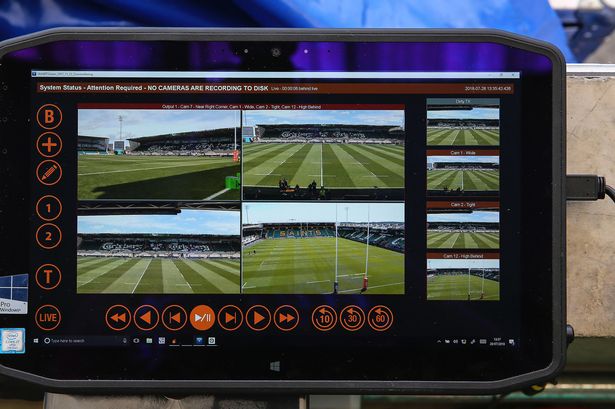
You may see disputes over whether the ball went in or out during any dramatic Grand Slam games in tennis. Hawk-eye is used in these disputes. A team can refer DRS to the match official to settle potential LBW calls during a cricket match. Rugby does the same thing with Television Match Official (TMO). In actuality, it did it before tennis or cricket. Rugby’s first official TV match, as well as the utilisation of TV and video referees, took place in Pretoria in 1995 during the Blue Bulls’ Carlton League Final. TMO was first used at the Toyota Club Championship in Durban at the start of 1996, and Johan Gouws was the driver.
History of TMO
It was initially utilised differently because there were no replays hence it was used in non-televised contests. The referee would receive advice from the TMO. Due to the expense, club rugby was unable to utilise the communication system between the referee and TMO and the cameraman that the union had engaged.
Following that, South Africa tested it out in the regional Under-21 competition, and the procedure progressively improved.
Initially used less frequently in Europe than in the SANZAR nations, the TMO is now routinely applied whenever practical.
What is TMO?
TMO is the abbreviation for television match official. The TMO is a person who typically sits in a truck outside the stadium and observes the match activity on TV screens. They can view numerous camera views of an incident using a device called Hawk-Eye and provide information to the match referee – via an earpiece – to aid in his decision-making.
Scope of TMO
TMO in Rugby is primarily limited to two significant areas:
- The act of scoring a try, whether it involves the ball being grounded or the lead-up to the try. Any violation throughout the two phases before a try would make it unlawful.
The TMO can also be used by the referee to determine if a kick went between the posts, but that rarely happens.
- Potential wrongdoing If the TMO observes something that raises suspicions of dirty play, he is free to speak with the referee at any time. The referee also has the right to request the TMO to look into an event, either before or after the game has been stopped.
How does it Work?
Typically, a large screen underground displays the footage. The referee has the option to decide right away without consulting the TMO if he chose to
In their laws, World Rugby clearly states that the referee “shall not be submissive to the system” and that he “must stay in charge of the game.”
In most cases, the referee will inform the TMO of “what I’m seeing,” and the latter will concur. The choice is made, and play continues.
TMO vs other review decision umpires in other sports
The accuracy of the DRS(Decision Review System) in cricket, which relies on the triangulation of visual pictures and data sent by video cameras positioned at various positions and angles around the field of play, has been questioned by several analysts.
For instance, during a Test match between India and South Africa at Newlands an event happened in the 21st over of fourth innings, which Ashwin bowled. The ball beat Elgar on the inside edge and smacked him just in front of the stumps as the spinner threw a tossed-up delivery. On-field umpire Marais Erasmus raised his finger.
Replays revealed that the ball was moving past the stumps when Elgar reviewed the call, which led to the judgement being reversed. The ball went past the stumps, shocking Team India, even umpire Erasmus could be seen frowning at how the ball sailed past the stumps.

The technology has not been properly incorporated into football. There is no established system for referees to follow, and the regulations are inappropriate. Important regulations like offside and handball have differing definitions, and VAR’s choices reflect this ambiguity. For scoring tries, issuing yellow and red cards, and other forms of misconduct in rugby, there is a precise system. For instance, a referee may ask the TMO, “Try or no Try?,” or “Try Yes or No?,” depending on what he has observed. A high tackle is any contact over the nipple line. The referee has the final say in all disputes, is free to apply his or her own interpretation of the rules, and frequently defies the TMO.
Rugby is able to maintain its subjective nature in this way because decisions are made as the game progresses. Football’s attempt to become objective through VAR is a dismal failure. Although a significant reassessment is required, it shouldn’t be abandoned.
Impact of TMO on the game

Most people believe that in its most basic version, the system first surfaced in 1999, and it has taken some time to work out any kinks. The goal is to lessen or do away with obvious inequities.
Slow-motion replays, which typically make an occurrence appear worse than it was, are another source of dispute. James Haskell of England protested about this five years ago after being sin-binned for a high tackle against Ireland.
The judgement that left wing Mark Cueto of England had not scored a try in the 2007 Rugby World Cup final is likely the most well-known TMO decision. The official referee was Stuart Dickinson of Australia, who was also an active referee at the time. Alain Rolland of Ireland served as the TMO.
The TMO was designed to make decisions of this nature.
